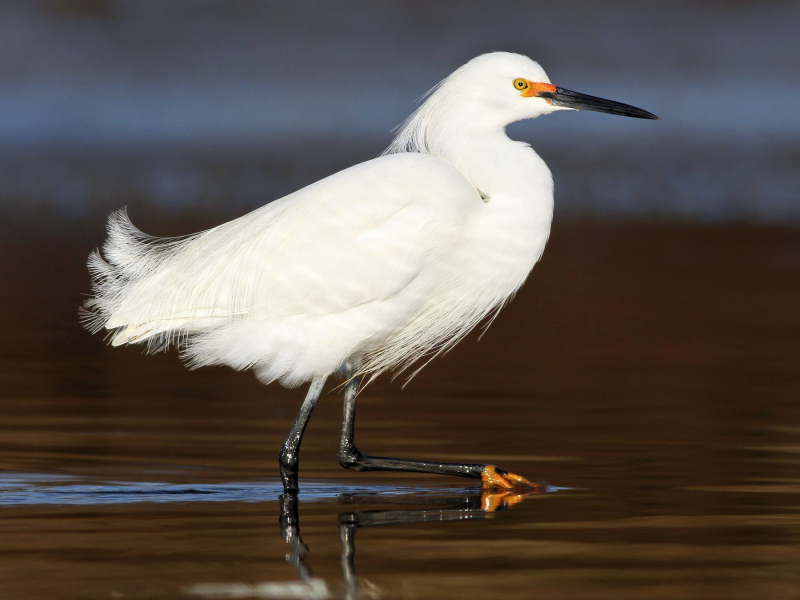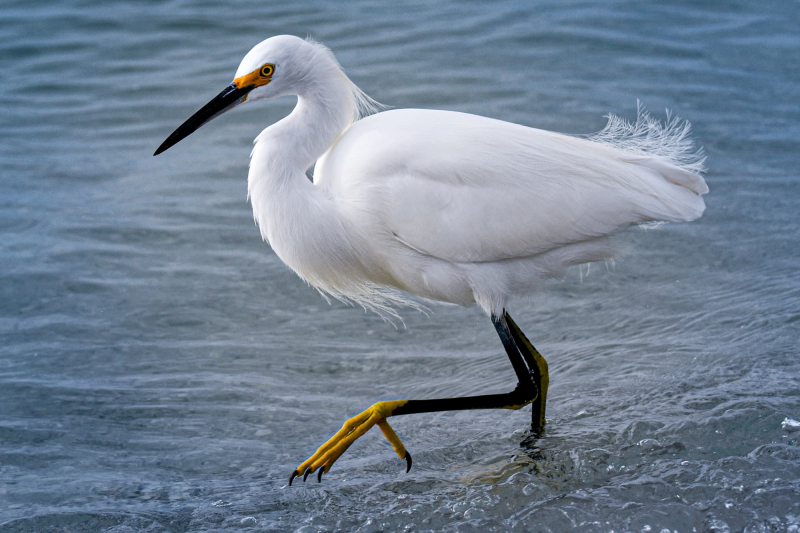Snowy Egret

The Snowy Egret (Egretta thula) is a small white heron. The genus name comes from Provençal French for the little egret, aigrette, which is a diminutive of aigron, 'heron'. The species name thula is the Araucano term for the black-necked swan, applied to this species in error by Chilean naturalist Juan Ignacio Molina in 1782. The snowy egret's plumes were once in high demand as hat ornaments for women. Because of the hunting for these plumes, the population of the animal was dangerously low. Now protected in the United States by law, under the Migratory Bird Treaty Act, this bird's population has rebounded.
Aside from the yellow lines, black legs, and brilliant yellow feet of adult snowy egrets, they are totally white. Long, shaggy plumes, known as aigrettes, hang from the nape and neck. Snowy egret juveniles have duller, more emerald-colored legs. The birds consume fish, crustaceans (including crayfish, crabs, and shrimp), insects, small reptiles (like lizards and snakes), snails, frogs, toads, and worms (especially earthworms and other annelids). They pursue prey in shallow water by sprinting or shuffling their feet, swinging their heads, flapping their wings, or vibrating their bills in an effort to flush the prey into view.











